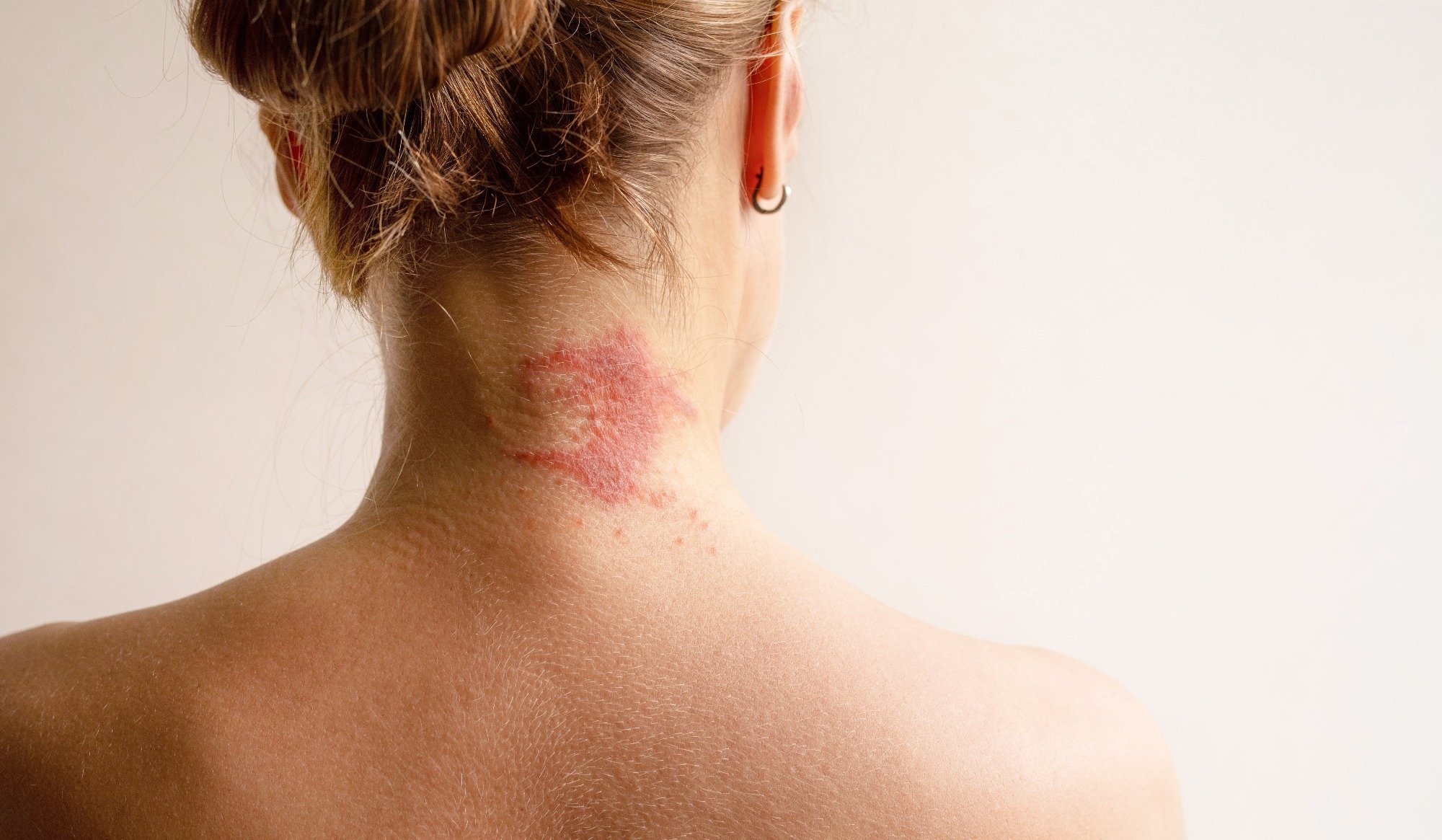Psychological stress weakens the ability of certain immune cells to clear away dead cells, causing a buildup that triggers more inflammation and worsens allergic reactions
 Study: Stress-experienced monocytes/macrophages lose anti-inflammatory function via β2-adrenergic receptor in skin allergic inflammation. Image Credit: savitskaya iryna / Shutterstock.com
Study: Stress-experienced monocytes/macrophages lose anti-inflammatory function via β2-adrenergic receptor in skin allergic inflammation. Image Credit: savitskaya iryna / Shutterstock.com
A recent Journal of Allergy and Clinical Immunology study investigates the cellular and molecular mechanisms through which stress exacerbates immunoglobulin E cutaneous allergic inflammation (IgE-CAI).
How does psychological stress impact disease risk?
Stress activates the hypothalamic-pituitary-adrenal axis and sympathetic nervous system (SNS), which subsequently induces the systemic release of epinephrine, norepinephrine, and glucocorticoids (GCs) from the adrenal gland and sympathetic postganglionic neurons.
Most immune cells express the receptors for epinephrine, norepinephrine, and GCs, all of which are stress hormones that can increase heart rate and blood pressure levels. Previous studies have also demonstrated that alterations in these hormone levels can influence immune responses.
GCs and catecholamines inhibit the TH1 response, which causes apoptosis and, as a result, altered immune cell dynamics. This stress response has been attributed to the increased risk of cancer and infectious diseases in individuals experiencing psychological stress.
Atopic dermatitis (AD) is characterized by elevated serum levels of allergen-specific IgE, cutaneous inflammation with infiltration of eosinophils, and enhanced expression of type 2 cytokines in inflamed tissues. When AD patients experience psychological stress, such as anxiety, their eosinophil counts in the peripheral blood increase, along with serum IgE titers and reduced TH1/TH2 ratios.
About the study
The current study investigates the molecular mechanisms by which psychological stress increases allergic skin inflammation in IgE-CAI. Previously, a restraint stress mouse model has been used to evaluate psychological stress-induced anxiety- and depression-like behaviors, which leads to increased serum levels of GCs and norepinephrine.
For experimental purposes, restraint-stressed (RS) mice were continuously restrained for two hours every day for seven days, followed by IgE-CAI activation on the last day of restraint. IgE-CAI was induced in each mouse using 300 μg of anti-2,4,6-trinitrophenol (TNP)-IgE, followed by antigen challenge.
To avoid differential intestinal flora development, both RS and unrestrained control (US) mice were housed in the same cage; however, differential immune activation occurred. During restraint periods, mice belonging to RS and US groups were separated to prevent control mice from becoming psychologically stressed by observing RS mice.
Study findings
Ear swelling, which indicates IgE-CAI development, was lower in RS mice than US mice. A significant increase in serum corticosterone levels was observed in RS mice immediately after restraint until ultimately returning to normal three days after the last restraint exposure.
Exogenous administration of corticosterone reduced IgE-CAI development. To avoid the GC effect, IgE-CAI was induced until four days after the last restraint exposure. Histological experiments revealed an increase in cellular infiltration into IgE-CAI skin lesions in RS mice as compared to US mice.
Fluorescence-activated cell sorting analysis also indicated an increase in the number of eosinophils in RS mice by two- to four-fold as compared to US mice. However, neutrophil, basophil, and programmed death ligand 2 (PD-L2+) monocyte/macrophage levels did not differ between the groups. This finding implies that restraint stress leads to exacerbation of IgE-CAI with greater accumulation of eosinophils.
Systemic sympathetic denervation was performed using 6-hydroxydopamine (6-OHDA) treatment with or without subsequent restraint stress. Exposure to stress was found to increase IgE-CAI in adrenalectomized mice, but not in mice with sympathetic denervation. Norepinephrine derived from sympathetic nerves did not significantly contribute to IgE-CAI exacerbation.
The β2-Adrenergic receptor (Adrb2), which is a norepinephrine receptor, is expressed in various cells, including immune cells. In Adrb2 knockout mice, the stress-induced increase of IgE-CAI was not present. Experimental results indicated that norepinephrine derived from sympathetic nerves and not from adrenal glands is associated with stress-induced IgE-CAI exacerbation through the Adrb2 pathway.
Psychological stress increases rostral medullary raphe region (rMR) sympathetic nerve activity and norepinephrine secretion, both of which can exacerbate IgE-CAI. Stress also leads to SNS release of norepinephrine acting on Adrb2 on monocytes and PD-L2+ macrophages.
The reduction in efferocytosis-related gene expression causes dead cell accumulation in inflamed skin tissues. Accumulated dead cells may release higher levels of damage-associated molecular patterns (DAMPs) causing caspase-1-dependent CCL24 induction, thereby increasing eosinophil infiltration and exacerbating IgE-CAI.
Ribonucleic acid (RNA) sequencing analysis revealed reduced expression of efferocytosis-related genes, including Gas6 and MerTK. The upregulation of Ccl24 expression in IgE-CAI skin lesions was countered by a caspase-1 inhibitor. RS mice exhibited reduced expression of efferocytosis-related molecules in PD-L2+ macrophages, thus implying that attenuation of inflammatory suppression exacerbates IgE-CAI.
Conclusions
The study findings demonstrate that psychological stress associated with exacerbation of IgE-CAI is sympathetic and β2- Adrb2-dependent. Stress inhibits anti-inflammatory functions of PD-L2–positive macrophages through Adrb2, which ultimately increases inflammation.
These observations suggest that macrophages' greater efferocytosis ability could be targeted to develop new therapeutic drugs for stress-aggravated inflammatory diseases.
Journal reference:
- Urakami, H., Yoshikawa, S., Nagao, K., et al. (2025) Stress-experienced monocytes/macrophages lose anti-inflammatory function via β2-adrenergic receptor in skin allergic inflammation. Journal of Allergy and Clinical Immunology. doi:10.1016/j.jaci.2024.10.038